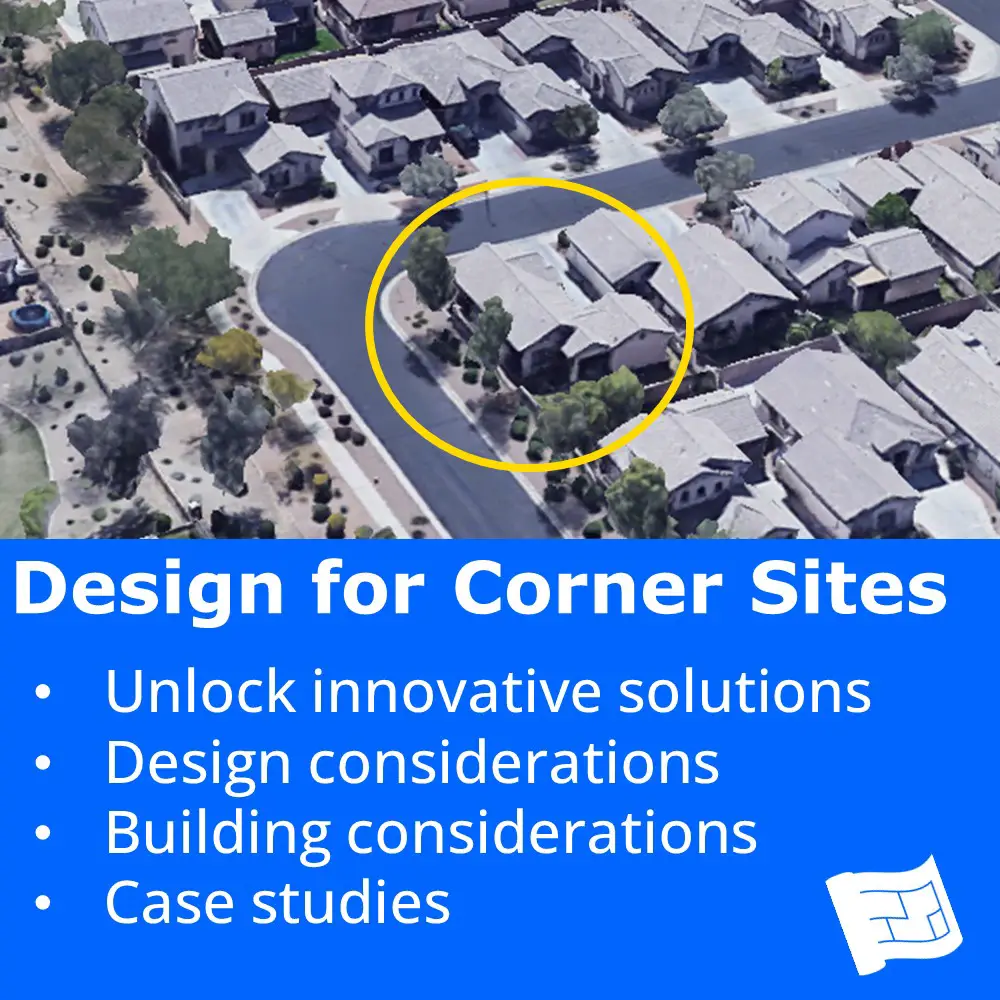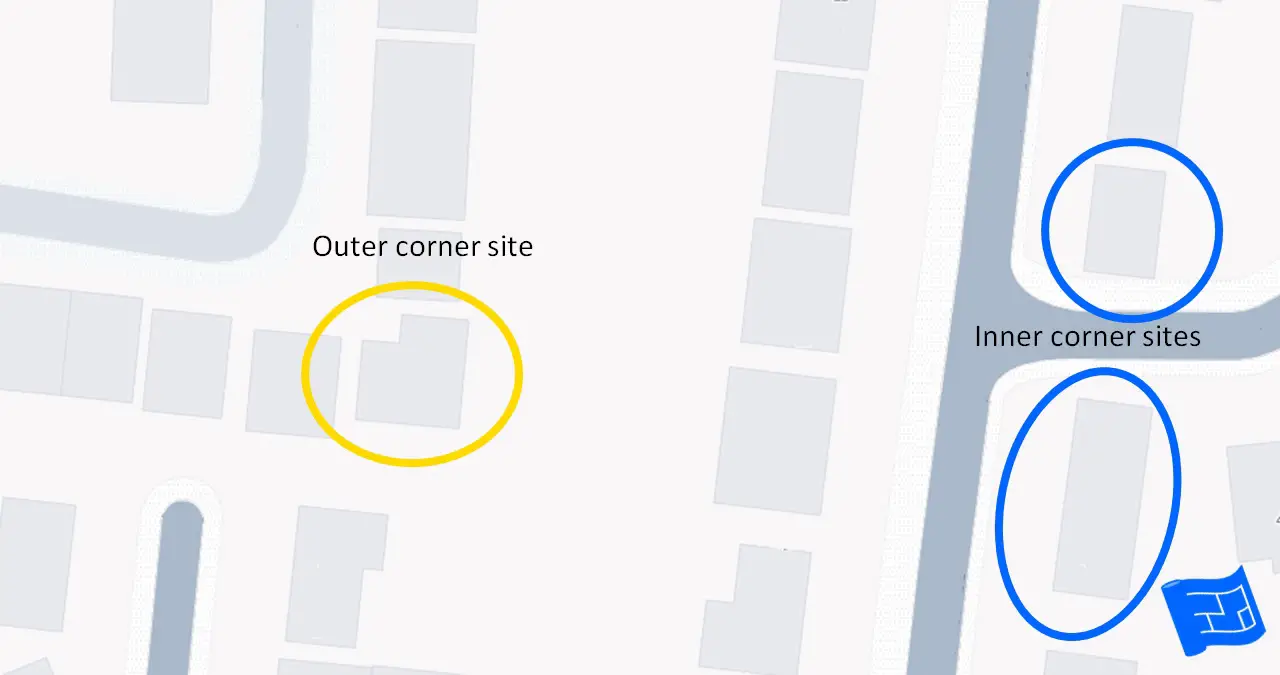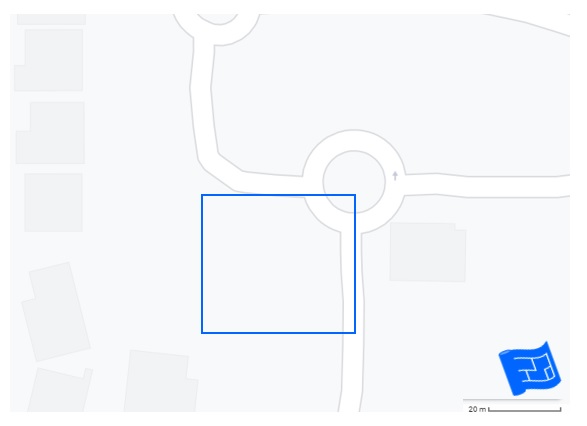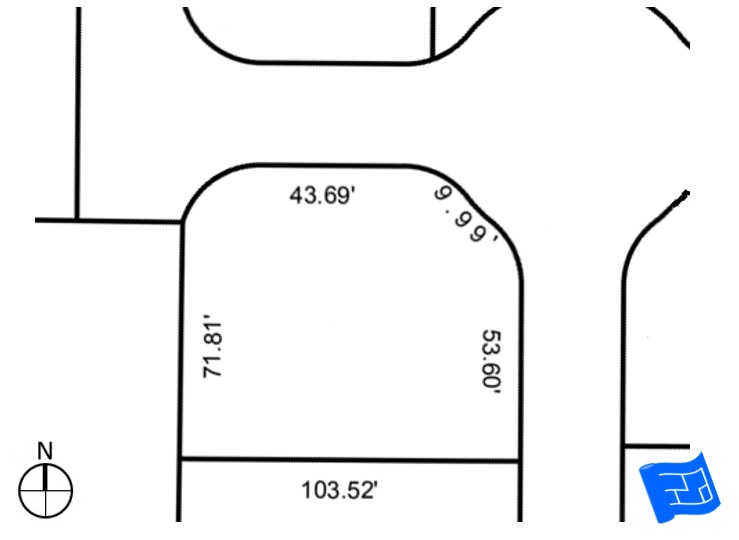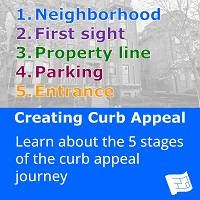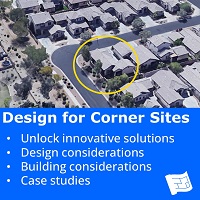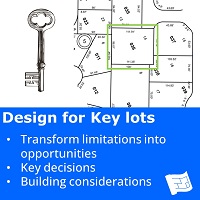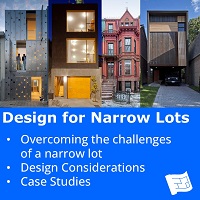- Home
- Your Lot ¦ Plot ¦ Site
- Design for your site
- Corner Site
Home Design for a Corner Site
The most important thing about a corner site (or lot or plot) is that you don't ignore the fact you've got a corner lot. It can be tempting to just design a home as usual because it will fit on the corner, but it's important to take into account the design challenges and opportunities that a corner site presents and tailor your home design accordingly.
When designing for your corner lot you can great quality of light and functionality and a great quality of life by working with your lot by maximizing it’s assets and playing down any aspects that don’t work so well.
If you're trying to find a site it's useful to know about corner sites just in case one comes up that you might be interested in.
There are two different types of corner site.
- The most common is what we'll call the inner corner site where two streets wrap around the site so the site is 'inside' the corner. Two inner corner sites are marked in blue in the image below. That's the type of lot we're dealing with in this topic.
- The outer corner site where the street curves round leaving a site on the 'outside' of the corner. An outer corner site is marked in yellow in the image below. These can also be known as key lots.
Corner Site Design Considerations
Design Consideration 1 - Shape & Size
- Once all the setbacks are taken into consideration, what is the shape of the ground area that you're allowed to build on?
- Some are square or rectangular but others are a sort of 5 sided shape, effectively giving 3 sides of street frontage like in the image below.
- Corner lots are often slightly larger than their neighboring counterparts in a suburban or urban setting.
- Be sure to find out what the set backs are by checking the site zoning. If your corner site is a slightly irregular shape the front and sides of the site might be defined slightly differently than how you'd expect.
- Check the site plan carefully.
Design Consideration 2 - Street frontage
To state the obvious, corner sites have street frontage on two (or maybe 3) sides. This presents several challenges and opportunities.
- There may be different combinations available to you for your entrances – both formal and informal or front and side entrances. You can put your front door and side door on different sides if that makes sense. With corner lots it's really important that your guests know where you want them to enter your home.
- You can choose for your driveway and garage to be on the same or different side as your front door. Separating the garage from the front door can be a really nice design opportunity because the garage can take up so much visual space at the front of a home.
- Is one street busier than the other? This can have an impact on where you decide to put the car and pedestrian entrances.
- If you have a pentagon shaped building area, what does this mean for how the home should be oriented? Does it makes sense for the front door to face the apex of the corner?
- Are you responsible for the sidewalks in front of your home? How are you going to handle the leaves and or snow on two stretches of sidewalk?
- Your home will need to have curb appeal on two sides. This can push your costs up for good looking materials and landscaping on two sides rather than one.

Street address tip
I heard of a homeowner who bought a property to renovate on a corner site. One of the streets of the corner was regarded as nicer than the other street - mainly because one street was quieter than the other. The address of their home was on the busier and less desirable street.
When they planned out the renovation they changed the location of their front door so that it faced the more desirable quieter street. Then they applied to change their address to the more desirable street and in the process added value to their home.
Not a bad return on investment for some clever design and paperwork!
Design Consideration 3 - Light and sun exposure
- If you're in an urban or sub-urban setting, you'll likely have unobstructed light on three sides of your home - from both sides of street frontage and the side where you place your outdoor space.
- Think carefully about where your outdoor space should be situated. An L-shaped home sometimes makes sense on a corner site to create a private outdoor space. The frontage of the home on both sides of the corner provides the shelter for the outdoor space.
Design Consideration 4 - Privacy and security
- Privacy can be an issue for corner sites. There's the street on two sides and often neighbors on the other two sides. If you compare this with a normal row lot, you're missing on on the space between you and the neighbors that's at the back of a normal row lot.
- Any privacy issues can usually by tackled by good window placement and landscaping provided that your local rules allow for landscaping to the front of your home on both sides.
- If your front yard is open, by that I mean there’s no wall or fence enclosing your front yard(s), some people see this as an invitation to take a short cut across your front yard to turn the corner.
- Weigh up the impact that having a corner lot has on the security of your home. The fact that the home is exposed to the street on two sides makes it less secure if there’s not many ‘eyes on the street’ in the way of passing cars or foot traffic. On the other hand if there’s lots of ‘eyes on the street’ a corner site might be more secure.

Street punctuation
Corner sites are special. They are like the capital letter at the beginning of a sentence (or row of houses) and the full-stop at the end. They are the punctuation of our streets.
Try using a bit of design punctuation (a tree or some other landscaping, color, fencing or a wall) to enhance the curb appeal of your corner site.
Key Design Decisions for Corner Sites
How does the orientation and outlook work with your corner site?
First of all, have a read of the site orientation topic.
- Where is the best place on the site for your outdoor living area? If that is going to be on one of the street sides, how will you make this area private?
- Where is the best place on the lot for your living space? How will you make your living space private?
- What are the outlooks from the site onto both streets?
Where will the formal entrance, informal entrance and car entrance be?
- Is one street busier than the other?
- Is there better visibility for arrival or departure into and out of the driveway from one street?
- Does either side lend itself better to pedestrian or car access?
- Are there any poles, hydrants or drains that obstruct access from either of the streets?
- How does the site look on the approach from both streets?
- Would you benefit from an entrance on each street? eg for a business you carry out at home?
- Would the value of your home increase if you changed the address to the other street?
A few other decisions
- Do you need to rethink your budget to allow for curb appeal on two sides?
- How will you make your home secure?
- How will you make your corner site special? What punctuation will you use?
Building Considerations for Corner Sites
Corner lots can make life easier for builders as there are more options for accessing the site and for storage.

